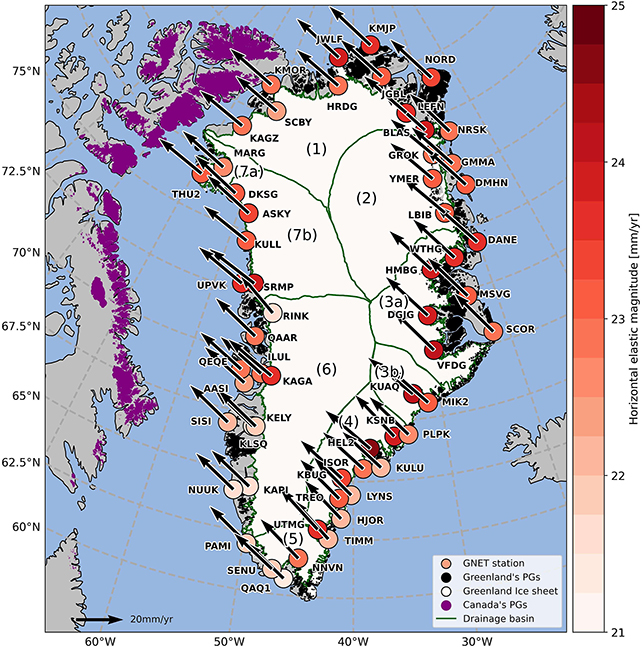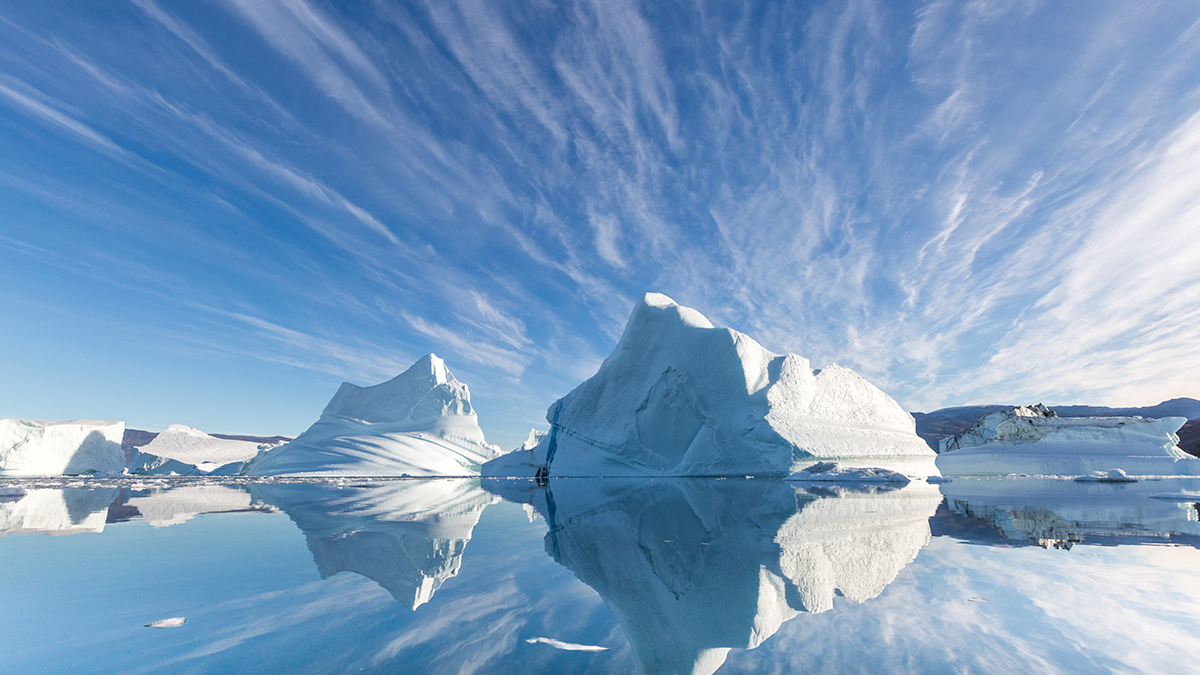Greenland is writhing as eons of ice accumulation and steady melting cause its foundations to change shape. This deformation, according to researchers, could have a profound effect on the future of navigating the surrounding region in an increasingly ice-free world.
Led by the Technical University of Denmark (DTU), an international team of scientists analyzed 20 years of GPS readings, tracking 58 specific points across Greenland’s territory. The data shows that as the landmass shifts northwest by about 2 centimeters (0.79 inches) per year, it is expanding in some places and contracting in others.
“Overall, this means Greenland is becoming slightly smaller, but that could change in the future with the accelerating melt we’re seeing now,” says geophysicist Danjal Longfors Berg, from DTU.
Related: Mysterious Signature in Greenland’s Ice Might Not Be From Space After All
Three geological forces predominantly affect Greenland’s chunk of crust: the push and pull of plate tectonics, the easing of pressure on the bedrock as today’s glaciers melt, and the much longer-term rebound continuing from the last Ice Age, known as Glacial Isostatic Adjustment (GIA).
 Greenland is moving to the northwest. (Berg et al., J. Geophys. Res. Solid Earth, 2025)
Greenland is moving to the northwest. (Berg et al., J. Geophys. Res. Solid Earth, 2025)
Using a combination of data from global positioning stations across Greenland, computer modeling, readings from several thousand other GPS stations across North America, and movement estimates calculated across the last 26,000 years, the team was able to separate these three contributing factors.
That gave the researchers the most precise measures of Greenland’s movements to date, particularly in the island’s horizontal shift. The work could improve future models of Greenland’s movement and improve understanding of how the planet is likely to respond to the continuing effects of climate change.
“The ice that has melted in recent decades has pushed Greenland outward and caused uplift, so the area has actually become larger during this period,” says Berg.
“At the same time, we see movement in the opposite direction, where Greenland is rising and contracting due to prehistoric changes in the ice masses related to the last Ice Age and its end.”
When such large bodies of ice are added to, or removed from, Earth’s surface, the effects can be significant. Scientists continue to refine their assessments as to what the consequences could be as ice disappears around both poles.
Previous studies have shown how hidden volcanoes could be awoken from their slumber, and how the greening of these polar regions has the potential to lead to significant increases in methane emissions.
Ongoing data collection and analysis could help refine estimates of Greenland’s changing shape.
“It’s important to understand the movements of landmasses,” says Berg. “They are, of course, interesting for geoscience. But they are also crucial for surveying and navigation, since even the fixed reference points in Greenland are slowly shifting.”
The research has been published in the Journal of Geophysical Research: Solid Earth.

